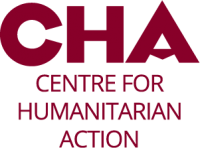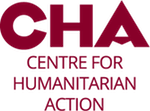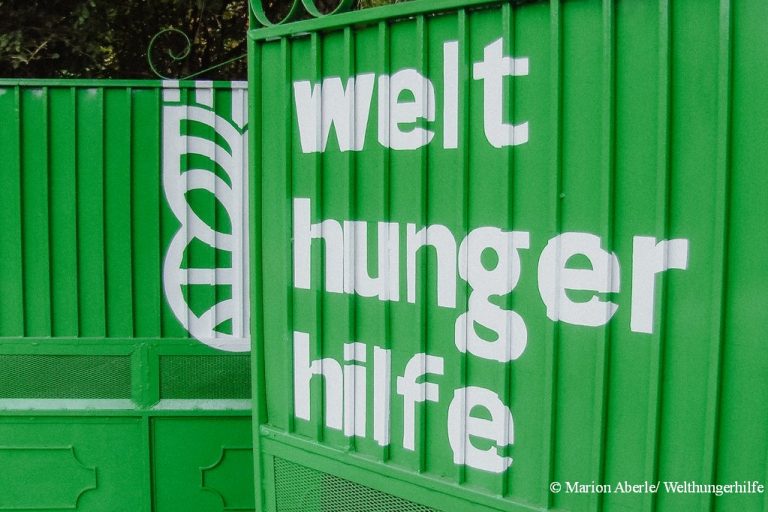Andrea Steinke has been Research Fellow at the Centre for Humanitarian Action (CHA) since August 2019, where she leads the research project on the Humanitarian-Development-Peace Nexus. In this interview, which is part of the interview series “Faces around CHA”, she explains what the Triple Nexus is all about, and what challenges the humanitarian community is facing.
Andrea, since the World Humanitarian Summit 2016, the Humanitarian-Development-Peace Nexus, also known as the Triple Nexus, has been high on the agenda in the humanitarian reform debate. What exactly is the Triple Nexus?
In theory, it’s quite simple. The term Triple Nexus describes an increased cooperation between humanitarian, development and peace-oriented actors. Instead of everyone solving a part of a problem on their own, the approaches should be more closely coordinated so that all the actors would contribute to a common goal.
The Triple Nexus debate is often criticized for being too theoretical and abstract. Do you have any practical examples illustrating the Triple Nexus?
In essence, the Triple Nexus approach seems to be very simple. However, so far this Nexus has mainly been dealt with on a less tangible policy level. We want to show what exactly it means for an organization to implement a crosscutting and integrated approach in practice, and to possibly deal with the peace component of the Triple Nexus. This could mean concrete peace-building activities, mediation for example, or agricultural support to alleviate resource scarcity and thus reduce the potential for conflict between groups. Some NGOs focus more on social cohesion. Other organisations extend the peace element even further, and, in their view, contribute to peace by providing, for instance, school meals.
At the same time, the core issue is not that humanitarian organisations should now become peace organisations. The question rather is when and where greater coordination between the areas makes sense, and where it is more likely to pose risks, for example, to humanitarian principles and thus to neutral and independent aid.
Are there conflicts of objectives between the three areas (humanitarian – development – peace)? Are the humanitarian principles – humanity, impartiality, independence and neutrality – threatened by the implementation of the Triple Nexus?
First of all, the humanitarian principles are always in danger; there has never been a time when they have not been. Safeguarding them is a constant task that will never be one hundred percent complete. It’s like democracy, it’s not given, you always have to work to preserve it. However, there are contexts in which the scope for principled humanitarian action is more limited than in others. The Triple Nexus can narrow this space. Let’s look at Mali: the UN mission MINUSMA is mandated to restore state authority in central Mali. But the Malian state is actually a party to the conflict. The issue here is whether and if so how aid organisations can support the UN in its task. Especially humanitarian actors quickly reach their limits in such a context. There is a lot at stake for them: humanitarian access, the safety of their own staff and partner organisations, and, last but not least, the integrity of the humanitarian principles. This often touches upon questions of civil-military cooperation and the limitations of this cooperation. Is the cooperation limited to the exchange of information, is there logistical support, or are projects carried out jointly? There are no easy answers here. In many places, for example, in Nigeria, humanitarian organisations don’t have access to populations without the logistical support of the military. The Triple Nexus thus highlights many dilemmas of humanitarian action.
The Triple Nexus is also described as the “New Way of Working”. What exactly is new about the Triple Nexus – hasn’t it been discussed for years, just with different terminology?
For many people who have been involved in humanitarian aid for years and decades this seems anything but new. Many see it as old wine in new bottles, a new edition of the resilience debate, or, more specifically, of the LRRD (Linking Relief Rehabilitation and Development) approach. For example, if you look at OECD DAC documents from the 1990s, they’re often exactly about that: increased cooperation between development cooperation and humanitarian actors for conflict prevention.
What distinguishes the situation today from that of previous decades, is the fact that humanitarian crises, in addition to their great complexity, now last much longer, and that most of the major crises of recent years were caused by man-made conflicts. The UNHCR, for example, assumes that crises involving flight and displacement last on average 26 years. There is no doubt that an adequate response is needed. We want to contribute to finding out whether and under what conditions the Triple Nexus is the right instrument for this.
What is the focus of your current research on the Triple Nexus at the Centre for Humanitarian Action? What contribution can CHA make?
As an independent institution, CHA can support organisations in finding their bearings in the Triple Nexus debate and discovering individual solutions for themselves. Our research area “Triple Nexus in Practice” looks at the concrete feasibility of the Triple Nexus, which has not been focussed on in great detail so far. In terms of content, we want to take a closer look at the peace aspect of the Triple Nexus, which has received little attention. While most institutions and organisations, especially double-mandate organisations, can draw on experiences with the Humanitarian-Development Nexus, there is a lot of uncertainty with regard to the peace component. Even the concept of peace itself as well as its permeability to related areas such as security and stabilization are interpreted differently, which leads to the clashes of objectives between different actors. We’re taking a closer look at the area of peace in the sense of a “Civil Triple Nexus”. In addition, we have developed an analysis model that is intended to provide orientation regarding the Triple Nexus beyond different types of interventions and local contexts.
CHA has recently finalised an evaluation of the Triple Nexus for the NGO Welthungerhilfe. Were there any new findings on the Triple Nexus – if so, what have you found out?
We looked at what the Triple Nexus means in concrete terms for the work of Welthungerhilfe, which is active in both development cooperation and humanitarian aid. In addition to the headquarters in Bonn, we also looked at three countries of operation and came to very different conclusions about the feasibility of the Nexus’ implementation. While the Triple Nexus in Mali has led to the disintegration of sectors in a paradoxical reversal of its original purpose, coordination and cooperation have worked comparatively well in South Sudan. Here, too, it must be emphasized that a precise context and conflict analysis is indispensable to address the question of how far an organization is moving into the Triple Nexus field.
Andrea Steinke is a Research Fellow at the Centre for Humanitarian Action (CHA). She leads the research project on the Humanitarian-Development-Peace Nexus. In her latest publication, she examines the humanitarian situation in Haiti ten years after the devastating earthquake.




